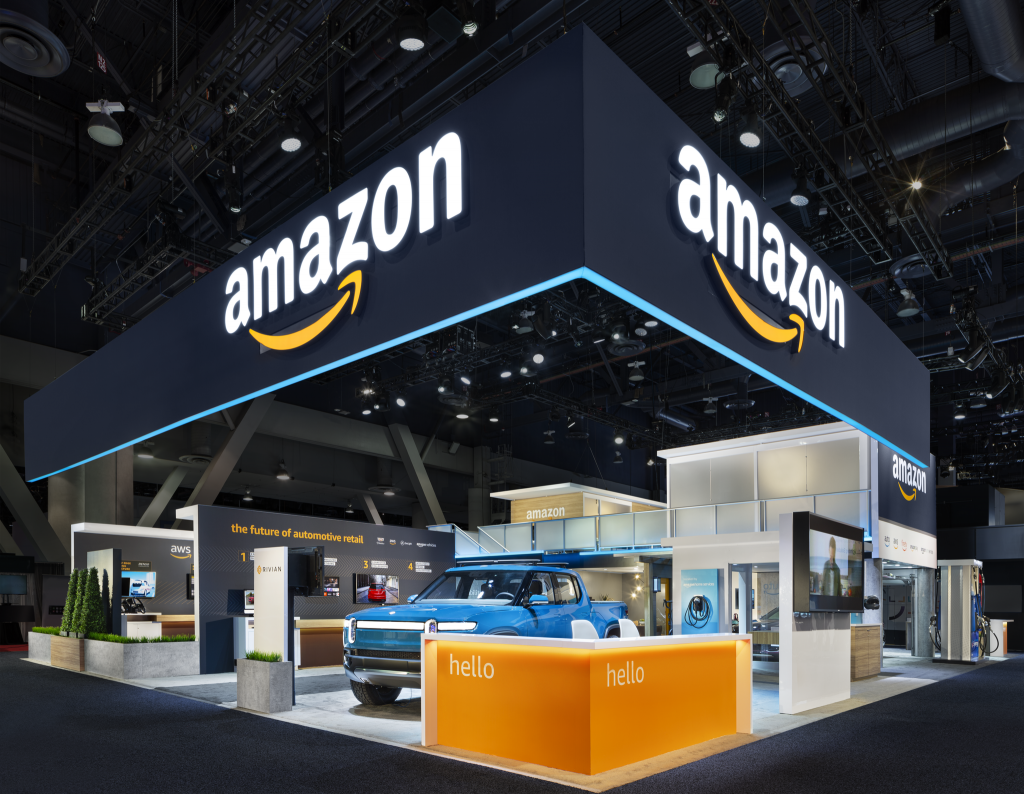AWS for Industries
Event recap: 5 automotive trends at CES 2020
We had an incredible response to the Amazon Automotive exhibit at CES 2020, which combined AWS, Alexa Auto, Amazon Pay, Amazon Fire TV, and other Amazon businesses. Customers, media, and analysts packed the booth to discuss how Amazon enables our automotive customers to accelerate the future of mobility.
For those that didn’t make it, or simply didn’t get to see it all, here are our top five automotive insights from CES 2020.
#1. Expect the unexpected
CES has always been a test bed for innovation, and 2020 was no exception. Whether it was Toyota announcing their Woven City, Hyundai partnering with Uber Elevate’s future aerial ride hailing service, or Sony unveiling a car, it is clear that automotive companies are serious about the transition from automakers to mobility companies.
The interconnectivity of the various vehicles, sensors, and intelligent devices and the ability to ingest, analyze, and act on the vast amount of data they produce remains an ongoing challenge.
In the Amazon Automotive booth at CES:
The Blackberry, Karma, and AWS demo showed how manufacturers can govern data from their vehicle’s sensors to create value for their customers through in-vehicle and third-party applications. In addition, the demo showcased how manufacturers can provide internal value by proactively managing vehicle maintenance, using machine learning to predict the health of the EV battery.
Accenture’s Data Monetization Platform presented an architecture to allow manufacturers to share data with third parties through AWS Data Exchange while also leveraging blockchain technology to ensure compliance to the customer’s privacy choices.
#2. It’s all about me
Personalization is a mega-trend that we experience across industries – from our mobile phones, to our vehicles to our online interactions. In automotive, personalization of the user experience has grown from simply remembering your seating, radio, and temperature settings, to understanding and automating your behaviors.
As we move to more shared-usage vehicles, the ability to provide a familiar experience becomes even more important. But personalization is also key in the shopping journey, where the customer increasingly favors content that is customized to their particular interests.
In the Amazon Automotive booth:
The Future of Automotive Retail Demo showcased a personalized customer journey powered by ZeroLight and Clinch and running on AWS. Watch the walkthrough video from CES 2020.
The Future Mobility Experience Demo, built by Elektrobit, demonstrated how Alexa, AWS, and other Amazon products and services can be used to create an intelligent in-vehicle experience.
#3. Autonomous drives ahead
Self-driving vehicles has grown to become a separate topic area of CES. While there were a large group of exhibitors and demonstrations, this year did not have the fanfare of years past.
Rather, the focus leaned toward the application of self-driving technology. Autonomous trucking companies are now consistently shipping products on select routes using AV. Automotive OEMs and suppliers are innovating around the user experience and business models of both shared and personal use vehicles.
Challenges remain in simulating real-world conditions across every possible scenario. This includes managing the vast amounts of data needed to create self-driving algorithms and providing the infrastructure and tools to train and deploy them at scale.
Relevant Amazon Automotive demos at CES:
The Unity demo showed how AWS Cloud computing resources can be used to accelerate autonomous Software in the Loop (SiL) simulation by running a large number of simultaneous simulations in parallel. Read more on Unity’s blog.
The Dell EMC and National Instruments demo showcased how AWS partners with industry leaders to provide solutions for complex autonomous vehicle workloads like Hardware in the Loop (HiL) simulation.
WeRide showed how they developed and deployed their China-based autonomous taxi fleet using AWS autonomous and connected vehicle platforms.

#4. It’s all talk
Voice assistants were omnipresent at CES again this year, showcasing that integrations in every imaginable device and automotive remains a critical domain. A recent report from Capgemini Research Institute estimates that nearly three-quarters of drivers will use an in-car voice assistant three years from now. Automotive OEMs are still walking the line of developing their own voice assistant versus embedding an existing assistant.
As voice continues to permeate the automotive user experience, the ability to understand the user’s intent across multiple languages becomes table stakes. The battleground is shifting to the ability to integrate with vehicle functions and the vast and expanding ecosystem of applications outside the vehicle to provide customer value and convenience.
Highlighted Amazon Automotive booth demos:
Amazon Pay and Exxon announced a partnership that will allow vehicles equipped with Alexa to pay for gas using only their voice.
Lamborghini announced they would be the first production vehicle to enable car control through Alexa, providing voice control of windows, temperate, and vehicle driving mode.
Rivian showcased their R1T Electric Truck, with the ability to control nearly all vehicle functions using Alexa.
#5. The new generation
The automotive discussion around 5G is beginning to take shape, with OEMs, suppliers, and telecommunications providers beginning to lay out their strategy. BMW announced 5G connectivity for their iNEXT electric crossover, and Verizon, HERE, and Harman showcased pedestrian safety initiatives enabled by 5G.
In the Amazon Automotive booth:
At CES, Denso showcased the possibilities of their cloud-to-edge computing platform for a variety of mobility use cases, by training vehicle sensors to detect and react to a variety of incidents related to vehicle security, driver behaviors, mapping, and perception. Learn more in the solution brief.
We expect to hear a lot more on 5G at Mobile World Congress next month. There will be continued development on how 5G will enable new mobile computing innovations, including computing capabilities at the network edge to power future smart city and mobility initiatives.
Did you attend CES 2020? Leave your top automotive takeaways and predictions for 2020 in the comments section of this post.